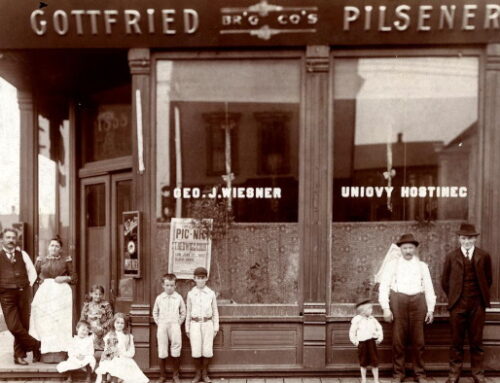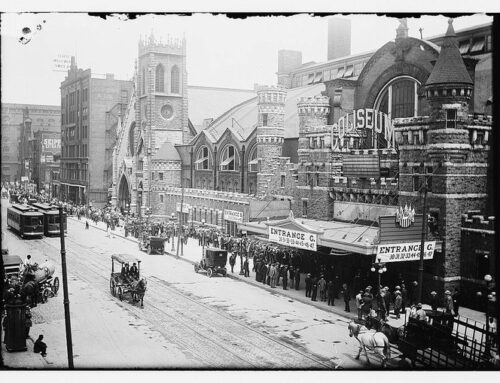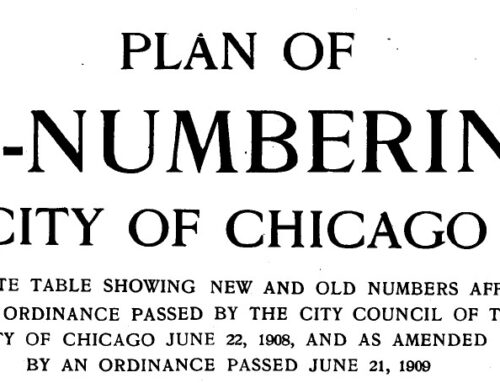Today I went touring 1910 Chicago. This experience was due to the creative combination of history and multimedia at Chicago flagship public radio station WBEZ.
The WBEZ show, Curious City, responded to a question posed by listener John Gardiner IV. And Curious City: What Tourists Did in 1910, is the result. My relatives and recent ancestors all lived in Chicago at this time. So it was a treat to see the city through 1910 eyes.
What Would You Do in 1910 Chicago?
Reported by Robert Loerzel & produced by Logan Jaffe, the interactive site asks users to choose one of four characters to experience 1910 Chicago.
“Would you bask in opulence at Marshall Field’s? Venture to the city’s first African-American theater? Seek illicit thrills at the Levee? Experience the city through the eyes of last century’s tourists!” Also noted: “Our characters are imaginary (except for one), but the facts and historical quotations about these places are real.”
Reader, I cheated and chose each of the four characters in turn so I could see what they saw. Julian Street is the real person on this site. A famous travel writer with a gift for wry (and sometimes snobbish) observations, Street’s modern-day counterpart would probably be Bill Bryson.
Julian Street Experiences a Chicago Tradition
What is a trip to Chicago in 1910 (or any year?) without saloons and aldermen? In 1914, Street wrote:
The Workingmen’s Exchange is a very large saloon, having one of the longest bars I ever saw; also one of the busiest. Hardly anything but beer is served there; beer in schooners little smaller than a man’s head. These are known locally as ’babies.’
‘I’ll tell you a funny thing about this place,’ said my friend the veteran police reporter. ‘No one has ever been killed in here,’ he said. I had to admit that it was a funny thing. After looking at the faces lined up at the bar I should not have imagined it possible.
Presently we crossed the street to the Alderman’s other saloon. Here we met Hinky Dink. He is a slight man. He wore an extremely neat brown suit, a round black felt hat, and a heavy watch chain, from which hung a large circular charm with a star and crescent set in diamonds. He looked as if he had just been washed and brushed. The little Alderman is very quiet. There is, indeed, a kind of gentleness about him.
Touring 1910 Chicago Included a Trip to Henrici’s
Fictional farm girl Jane Wilson visited Henrici’s. “Many a time, at luncheon, a leading personality in civic government, in finance, or in commercial or professional life, will be found seated at the same table with a stranger from a very modest walk in life. This is Henrici’s.” — Henrici’s ad, Chicago Tribune, 1918
“Henrici’s has never been influenced by the craze for over-decoration and other bizarre effects elsewhere deployed. When music in various forms was first highly favored as a restaurant attraction Henrici’s advertised ‘no music.’ The phrase ‘no orchestral din’ has since become familiar to most of the residents of Chicago.” — Henrici’s ad, Chicago Inter Ocean, 1914
“Any acquaintance in Chicago will tell you Henrici’s is by all odds the place to dine. Appropriate for ladies. A famous restaurant moderate in its charges.” — Henrici’s ad, Janesville Daily Gazette, 1914
Although I was never to eat at the Henrici’s in the Loop, the restaurant is a vivid memory of Columbus Days gone by. My mother and long-suffering, good-natured grandmother would take me and my sisters as children to shop for clothes at Old Orchard, and then Oakbrook. Lunch was never at McDonalds, which we would have considered exotic enough. No, it was at Henrici’s with cloth napkins, no elbows ever on the table, seen-but-not-heard best behavior, and maternal exhortations to sit up straight. That’s Henrici’s to me.








Leave a Reply